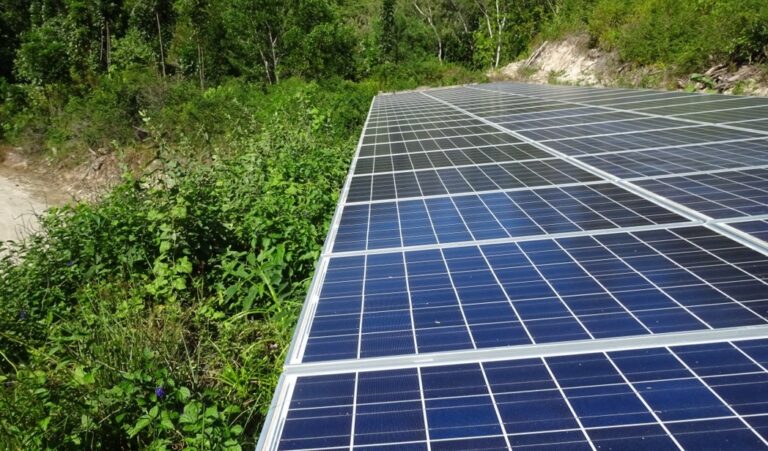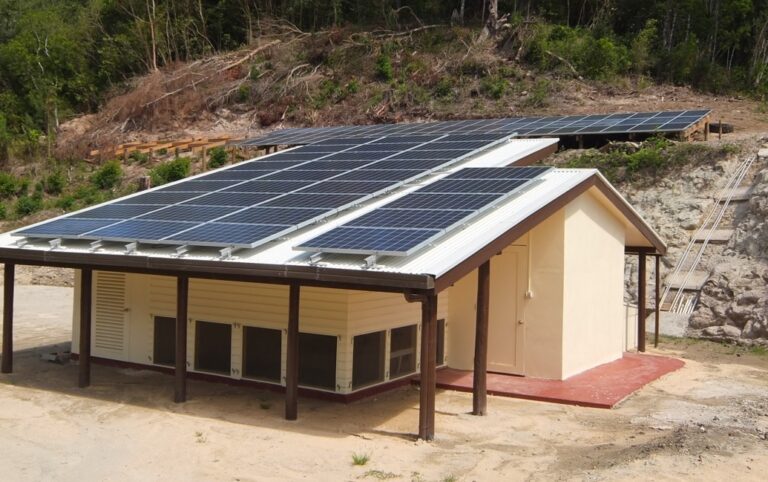© 2011-2025 The Avataric Samrajya of Adidam Pty Ltd, as trustee for the Avataric Samrajya of Adidam. All rights reserved.
Posted August 2020

As part of Avatar Adi Da’s calling to all humankind to respect and care for the natural environment, he called for his devotees to ensure that the hermitages and sanctuaries of Adidam are managed in ways that minimize their impact on the natural environment and climate change.
Like many other islands in the South Pacific, Naitauba faces the challenge of generating electric energy for itself. Several mission-critical systems on Naitauba, including communications, medical facilities, food storage, and irrigation, depend on electric power. Therefore, it is essential that electricity be available at all times.
Naitauba has historically relied on diesel generators for electric power. In addition to its environmental impact and cost, this reliance on diesel fuel also leaves Naitauba vulnerable to fluctuations in fuel supply, since the outlying islands of Fiji are at the very end of a long supply chain extending from refineries in Singapore. For Naitauba, energy security means energy self sufficiency, which—because of our commitment to minimizing our environmental impact—requires electric power generation locally from renewable sources.
Our commitment to reduce the use of petroleum products is guided by our commitment to the environment. That means reducing fossil fuels to a minimum. Therefore, our intention is to develop solar electric power to entirely replace diesel power on Naitauba, except as emergency backup. Solar power is now a mature technology—as reflected in its increased efficiency, excellent pricing, and features such as remote monitoring that ensure the system is functioning optimally.

Initial efforts toward solar power were limited to solar hot water, solar water pumps, and the like. Naitauba’s first solar micro-grid was commissioned in 2007 at the smallest of four diesel generator sites. This system was very successful and provided a valuable learning experience. A second, larger solar micro-grid was commissioned in 2014 servicing Qaravi, the main village for devotee residents. Presently we are working to replace this second system with a new, larger solar system from Tesla that will provide 90% of the electricity for both Qaravi and the staff residential complex of Ciqomi. These two locations are by far the largest users of electricity on Naitauba.
Until recently, the large capital investment of solar power together with its price per unit of energy (compared to diesel) seemed like an insurmountable barrier. Thanks to advancing technology, and to the commitment and generosity of the Adidam membership to convert Naitauba to renewable energy, the project is now becoming a reality. As of August 2020, we are fully funded for the 90% solar solution for the two main locations and about to sign a contract for construction. Grading of the site for the 700+ solar panels began in 2019 and is close to completion.
In conjunction with construction of the Qaravi / Ciqomi solar micro-grid, work will begin on converting the remaining two smaller diesel-generator locations to solar power, including the Matrix, the temple complex on the east side of the island.
The conversion of Naitauba to renewable electric power is now in sight. If you would like to learn more about the Naitauba solar power initiative, or if you would like to assist in any way, please contact us.
© 2011-2025 The Avataric Samrajya of Adidam Pty Ltd, as trustee for the Avataric Samrajya of Adidam. All rights reserved.